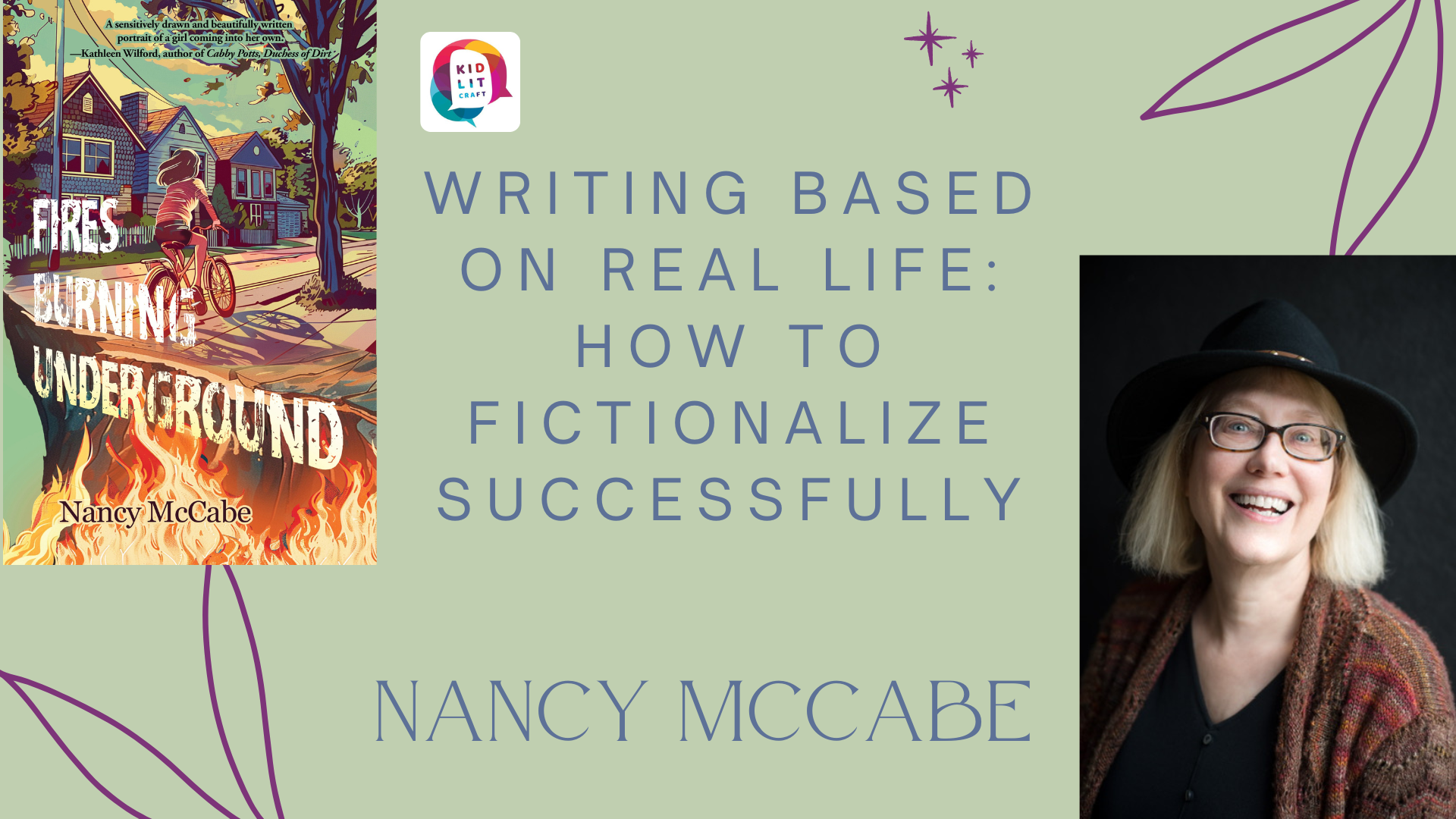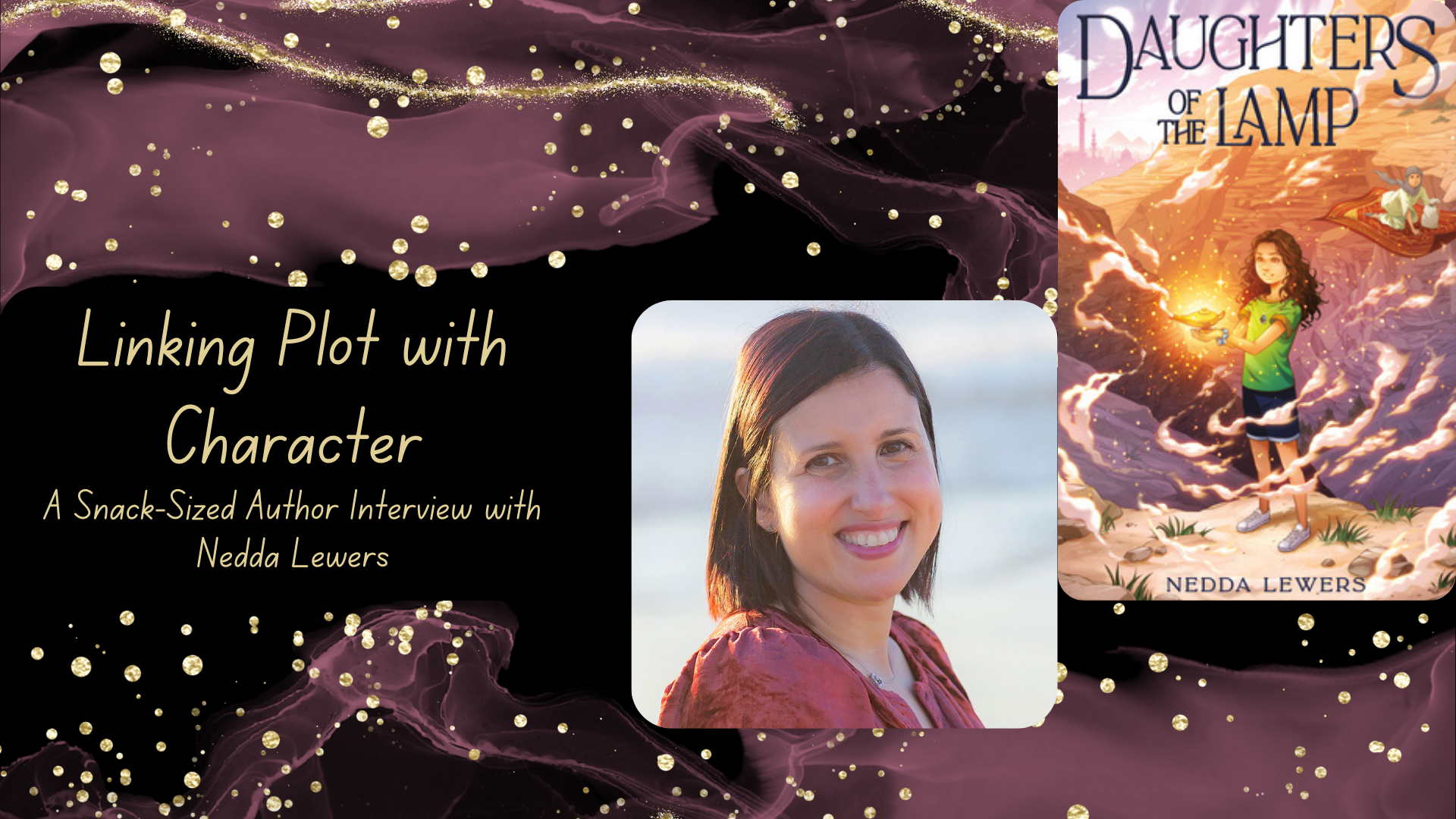Craft Articles
Join us in exploring others’ craft and building our own.
Here you will find explorations of mentor texts – articles that dive into specific craft elements in published books, interviews with authors, and tips on growing and improving as a writer.
Disclaimer: Some posts include bookshop.org affiliate links. Use the links to support KidLit Craft and local bookstores, at no additional cost to you.
Browse the Blog

Erica George: It’s a Journey
Social media is really all smoke and mirrors, and every writer’s journey is going to look remarkably different. It can be debilitating for a newbie author to see what seem like huge deals or other authors being favored by their publishing houses. The goal, no matter what, is writing the best book you possibly can in order to connect with your readers. That’s what really matters.

Writing Based on Real Life: How to Fictionalize Successfully
Converting my story from a personal one to a piece of fiction was the best choice. Not only did it strengthen the story I wanted to tell, but it reminded me that sometimes fiction is the best way to discover the truths of our lives.

Tirzah Price: Don’t Stop Challenging Yourself
Keep writing the next book, and don't stop challenging yourself! When you're a new author, there's so many fun "firsts" and great experiences that come with being published and you should definitely enjoy them! But it's important to remember why we write in the first place and to challenge yourself creatively along the way.

Nedda Lewers: Linking Plot with Character
When it comes to leaving readers guessing, try to find the sweet spot between revealing too much (they know how it will end) and not enough (they have no idea what is going on). Your readers should feel curious but not confused. Critique partners and beta readers can help you find this balance because, unlike you, they don’t know how the story will end.

Martha Brockenbrough: Staying Curious
“In the many years I’ve worked at this craft, I’ve come to believe my superpower is curiosity. If you can remain curious about a subject or curious about a writing form, you can persist with your attention until you have learned something. Stay curious, friends!”

Ann Bonwill: Enjoy the Journey
“Enjoy the journey. I've had productive periods and dry spells, years when I've sold several books and (many) years when I've sold none. Every step has made me who I am as a writer and a person. I would tell myself to embrace that road and not worry so much about whether I was meeting certain goals at the "right" time.”

Patricia Tanumihardja: Breaking the Rules
“Don't be afraid to break the rules. I think it's important to learn what the rules are. But if you find they don't apply to you, or if you want to try something off the beaten path, do it!”

Jenn Bailey: Crafting the Ultimate Payoff
“If your climax feels a little flat, or if you aren’t feeling the emotional payoff you’ve expected, look at earlier chapters and scenes. Make sure you’ve written in the reasons that make this climax inevitable. And that you’ve positioned your main character in the kind of emotional state where this final scene will let readers feel a satisfactory resolution.”

Rebecca Weber: Writing Conflict, Chapter by Chapter
“I pay a lot of attention to conflict or stakes for driving the plot. Obviously, every book has an overarching conflict, but each chapter should have its own smaller conflict, too. Creating tinier tense moments throughout the book keeps the reader turning the pages.”

Kate O'Shaughnessy: Patience with the Process
“I’m always trying to tell myself to do less and trust the reader more. Trust that the actions of your characters will speak for themselves. Have them do kind things and you won’t have to describe them as kind. The reader will understand it, because the reader is smart. And it’s always much more exciting to figure something out than to be told it.”

Cindy Chang: Playing with the Past
“Writing about a lived experience, especially a difficult one, can be challenging. As much as you may want to share exactly how the events unfolded in reality, it’s okay to take some creative liberties. Ultimately it’s more about figuring out the story and focusing on communicating the wants, conflicts, and lessons learned through your lived experience. And in doing so, you may find yourself feeling a little freer from the past.”

Deborah Underwood: Writing Dynamic Dialogue
“You can communicate so much using dialogue alone. Try telling your story in dialogue only and seeing what happens. Even if that doesn’t work for the final version, it might help you to find a character’s voice or learn something new about them.”

Christine Evans: Kicking Your Story Forward
“There's no rush. Take your time to make your work the best it can be before sending it out.”

Casey W. Robinson: Writing Stories with Heart
“Find a book you loved from your childhood and re-read it. How does (or did) it make you feel? What was it about the language, the read aloud, the characters, the storyline that captivated you? I've noticed that I connect to these “old” heart stories differently than I do newer mentor texts. As writers for kids, this kind of first-hand knowledge can help our subconscious brains make smart editorial decisions when we’re drafting.”

Serena Gingold Allen: Success with Scenes
“Even though it can be intimidating to share your work with others, particularly when you're starting out, find and join a critique group. It's important to find a good match, so keep trying out new ones if the first one you try doesn't work. I wouldn't be the writer I am today without my critique partners!”

Writing Engaging Young Adult Mysteries That Tackle Emotional Health Issues
“Mysteries are natural places to explore issues of emotional health, because the behavior of people who harm others can generally be traced back to their own emotional problems and issues, and of course their actions have a huge impact on the protagonists of our stories.”

Misa Sugiura: Taking It One Scene at a Time
“It is very easy to feel like what you've accomplished isn't enough. The solution (it's not easy): Enjoy the ride you're on. Let go of the stuff that's out of your control (other author's experiences, marketing budgets, awards) and control what you can, like writing your next book.”

Lea Lyon: Following Curiosity and Trying New Things
“If you're researching for a nonfiction project, search beyond library databases. Reach out to librarians and archivists. Visit locations where events from the story you're researching took place, and visit archives and libraries in the area. Above all, reach out to experts in the subject matter. They are invaluable resources and are invested in the public (especially children) knowing more about their area of expertise.”

Thieves’ Gambit: Shifting Desire (KLC Podcast, S2 Ep. 4)
In the fourth episode of the podcast, Nuttall and Strohman focus on desire, specifically shifting desire. In Thieves’ Gambit, the main character, Ross, also has a Shifting Desire because her external desire changes early in the story.

Seina Wedlick: Deconstructing Story Structures
“Traditional publishing is often a slow process...There are occasionally books that get snapped up and released really quickly, but, more often than not, it’s a much longer wait . . . It’s so important for writers to plug into a community of other writers they can share this journey with and to use the ‘waiting period’ to work on something new or hone-in on their craft.”

